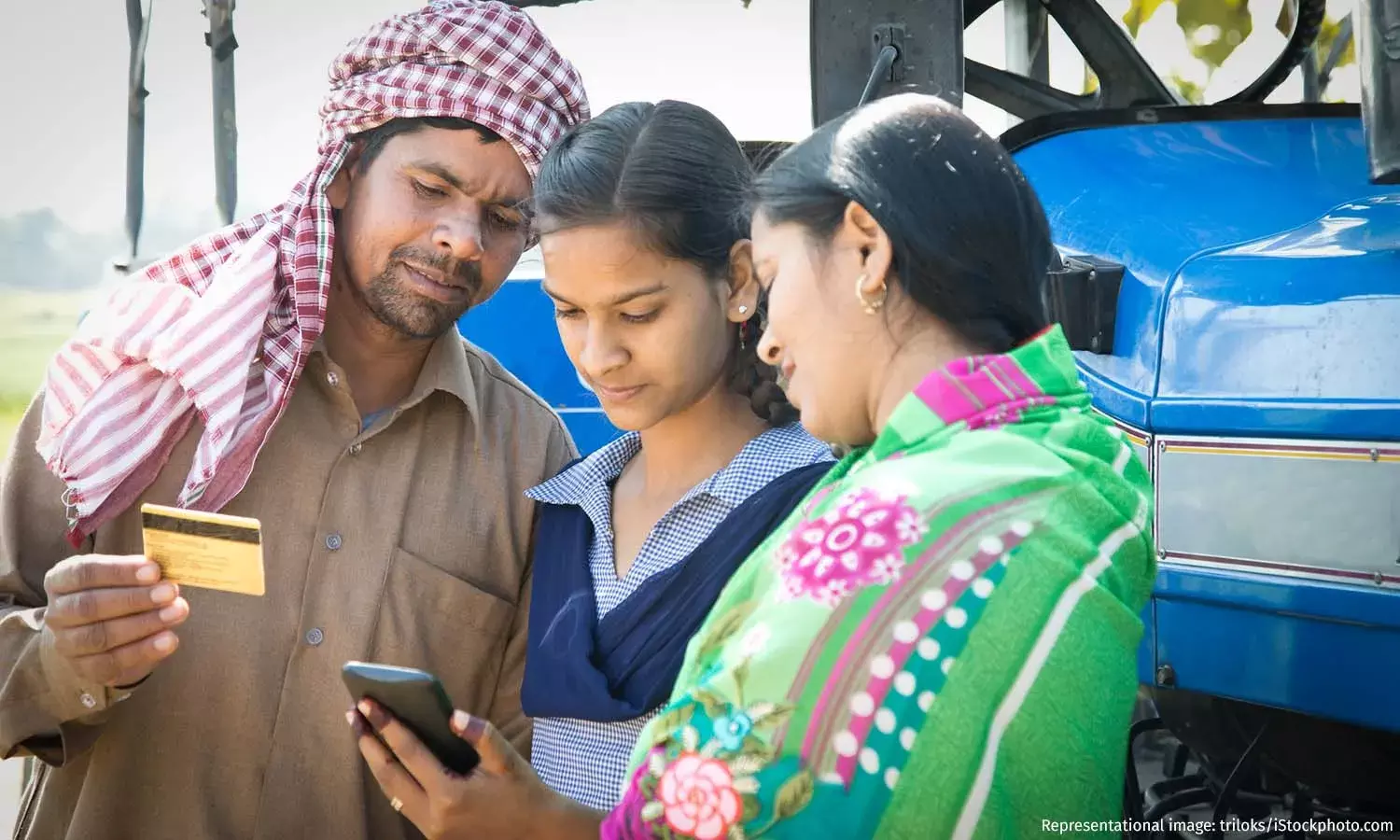Why India Needs To Urgently Address Gender Gap In Digital Skills
Fewer women use or own mobile devices, and even fewer possess the skills required to leverage the devices and participate in the digital economy

Mumbai: As India’s mobile phone ownership increases, the country’s digital divide is showing up not in usage but in the digital skills that her citizens possess in order to leverage the devices, data from the Comprehensive Modular Survey: Telecom 2025 (CMST 2025), under the 80th round of the National Sample Survey of the Ministry of Statistics and Programme Implementation released last month suggest.
Nine in 10 men and four in five women aged 15 years and above report using a mobile phone for making personal calls or accessing the internet. Ownership is lower: 84% men and 56% women said they own a mobile phone.
This is not new. In 2018, IndiaSpend reported that there was a 33-percentage-point gap in mobile phone ownership of men (71%) and women (38%).
But the gender gap is more stark in Information and Communication Technology (ICT) skills. The report analysed skills such as receiving and sending emails, making electronic presentations, performing online banking transactions and reporting cyber crimes. Girls and women in the age group of 15-29 years are particularly impacted by the digital divide in terms of device ownership and acquisition of ICT skills, the data show.
And unless India's women are able to catch up, and fast, to bridge the existing gap, it will continue to affect their prospects for entrepreneurship, restricting women-run businesses to low-tech, and low revenue-generating sectors such as food and handicrafts with few opportunities for growth, as we had reported in October 2022.
The CMST 2025 has released data for three age groups: 15-24 years, 15-29 years, and all ages above 15 years. India’s median age is about 28.8 years, as per demographic projections, so the 15-29 age-group is critical and represents the young working age cohort. Median age of population is the age that divides the country’s population exactly into half; a lower median age implies that there are more young people in the country. This is also the youth or the ‘demographic dividend’ of India.
Prior to this report, the National Sample Survey Office had released the Comprehensive Annual Modular Survey, 2022-23 in October 2024, which also included categories like education, health and social inclusion. As part of the 80th round of the National Sample Survey, the CMST 2025 was conducted from January to March 2025 specifically for internet and mobile usage and ICT skills, on request by the Department of Telecommunications and Ministry of Electronics and Information Technology.
The digital divide
Overall, 86% households have access to the internet at home. And while most of them use a mobile network for internet access, one in six have a fixed line or WiFi connection. While Internet users in the west progressed slowly from dial-up, to broadband and 3G, Indian consumers have largely leapfrogged into the digital world with cheap data plans and affordable handsets, as IndiaSpend reported in November 2018.
In comparison, 91% households in the United States and 96% in Great Britain have internet connections, with higher WiFi penetration. Among BRICS nations, 87% Brazilian households and over 90% households in China have fixed internet connections.
Further, 73% Indians in the 15-29 years of age group own mobile phones, and 94% of them own a smartphone. In comparison, 98% in the UK (16-24 years) and 98% in the US (18-29 years) have smartphones.
Similarly, mobile phone ownership among Indian women is also lower: 56% women ages 15 and above own mobile phones in India, compared to 98% in the US and 95% in the UK.
South Asian countries such as India, Pakistan and Bangladesh remain “clear outliers” for gender-equal mobile phone ownership among nations with similar levels of development--comprising some of the highest gender gaps in the world, we had reported in 2018.
“It’s even more of a puzzle when you see usage and ownership is actually much cheaper here [in India] than in sub-Saharan Africa for example,” Rohini Pande, Rafik Hariri Professor of International Political Economy at Harvard Kennedy School, had told us.
Smartphones, as we said, are most popular especially among the young people. Older Indians still depend on what are now called ‘feature’ phones or simply, cellular phones. Overall, 70% Indians aged 15 and above own mobile phones and of them, 80% own smartphones. Rural women have the lowest levels of mobile and smartphone ownership.
Successive reports by the Internet And Mobile Association of India (IAMAI), a Mumbai-based non-profit industry body also substantiate the fact that internet penetration has been on the rise in India. The IAMAI, in association with the New York-based marketing data and analytics firm Kantar, has been releasing the Internet in India report for public consumption since 2022. By 2021, after the Covid pandemic, rural internet users in India have been consistently exceeding urban internet users, as highlighted in the 2024 report.
The gender gap has been narrowing, especially after Covid-19 lockdowns; but women and younger people tend to use shared devices. Gendered access to digital mediums excluded many girls from education during the Covid lockdowns, as IndiaSpend reported in June 2020. A rapid survey of 290 adolescent girls from Uttar Pradesh, Tamil Nadu and West Bengal during the first wave of Covid-19 found that 40% could not attend online classes while another 9% were able to attend only sometimes, we had reported.
Young women missing out on ICT skills
The United Nations’ Sustainable Development Goal 4 (SDG 4) focuses on “ensuring inclusive and equitable quality education and promoting lifelong learning opportunities for all", with one component measuring penetration of ICT skills.
Nearly half of rural India’s young women (15-29 years of age) were not able to send/receive emails, 21% were not able to send messages with attached documents, 22% do not know the use of copy-paste function, 50% are unable to perform online banking transactions, and 74% cannot make presentations.
These statistics are not surprising since 43% of young women (15-29 years) in India’s villages do not own mobile phone devices, they have to rely on other family members for accessing these devices.
Young rural women, as we said, face more exclusion--seeing a 24-percentage-point gender gap in mobile phone ownership compared to 11 percentage points for urban women.
Nationwide, women are particularly lagging in access and usage of digital tech, as data from CMST 2025 report show. A majority (56%) of all Indians above 15 years of age are not able to use email services. Among women, almost two-thirds (64%) are unable to send or receive emails. Similarly, for using online banking too, women are lagging behind men by 24 percentage points in the ability to use technology for economic transactions.
The gap inevitably means that women are deprived of opportunities in a labour market where digital skills are in demand, according to a 2022 report by the Asian Development Bank and social networking platform LinkedIn, as we had reported in October 2022.
India's digital gender gap is the result primarily of three factors--a rural-urban divide; an income-based divide, and social norms, we had reported. In a society where mobile phones are viewed as a risk to women's reputation pre-marriage and an interruption to caregiving responsibilities post-marriage, "women's online activity is often governed by male relatives", Mitali Nikore of Nikore Associates, an economics research group, had told us.
While young women lag behind men in every indicator of ICT skills, the men in rural India do not fare much better, revealing the rural-urban divide in digital skills. There is a gap of 17 percentage points between young people in rural and urban India on email use and online banking.
IndiaSpend reached out to the education ministry for comments on initiatives being taken up to improve access to and skilling in digital technologies. We will update this story when we receive a response.
We welcome feedback. Please write to respond@indiaspend.org. We reserve the right to edit responses for language and grammar.


